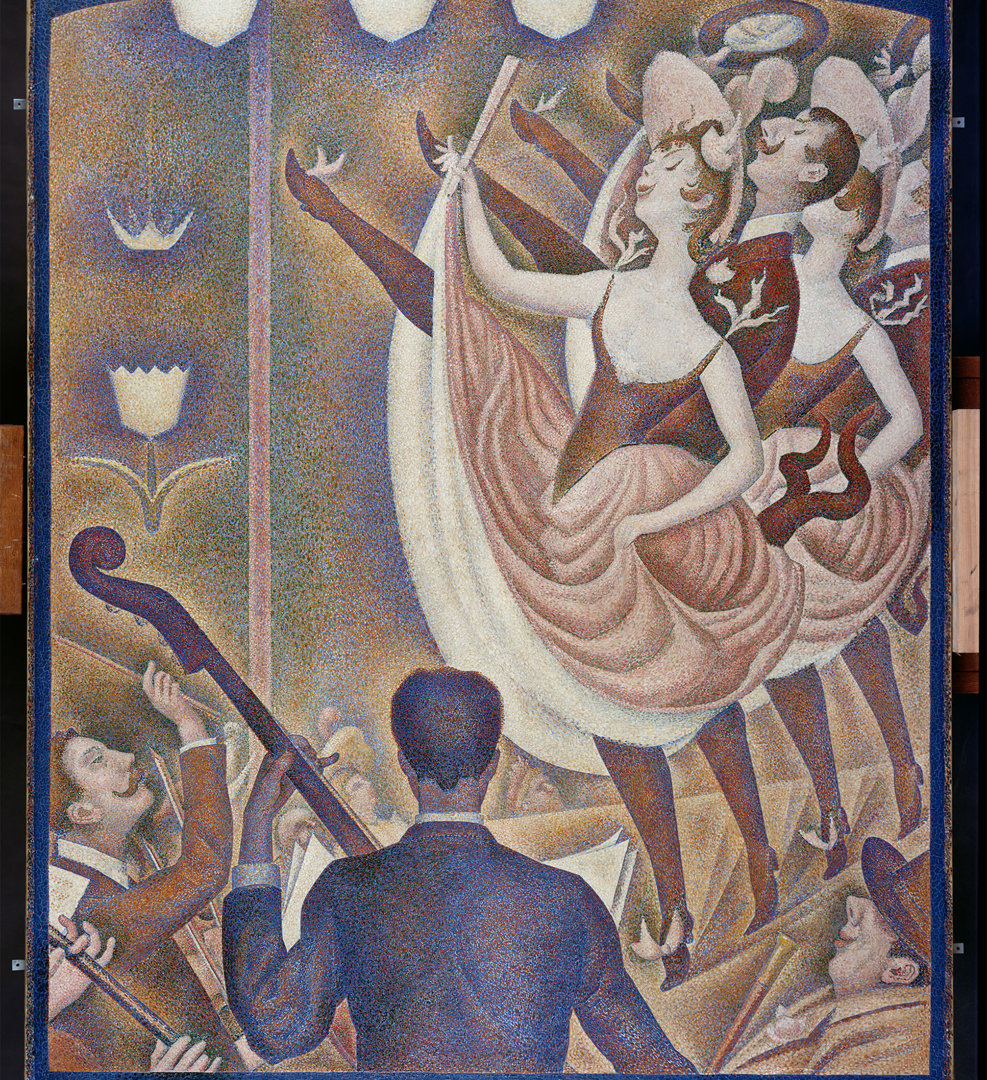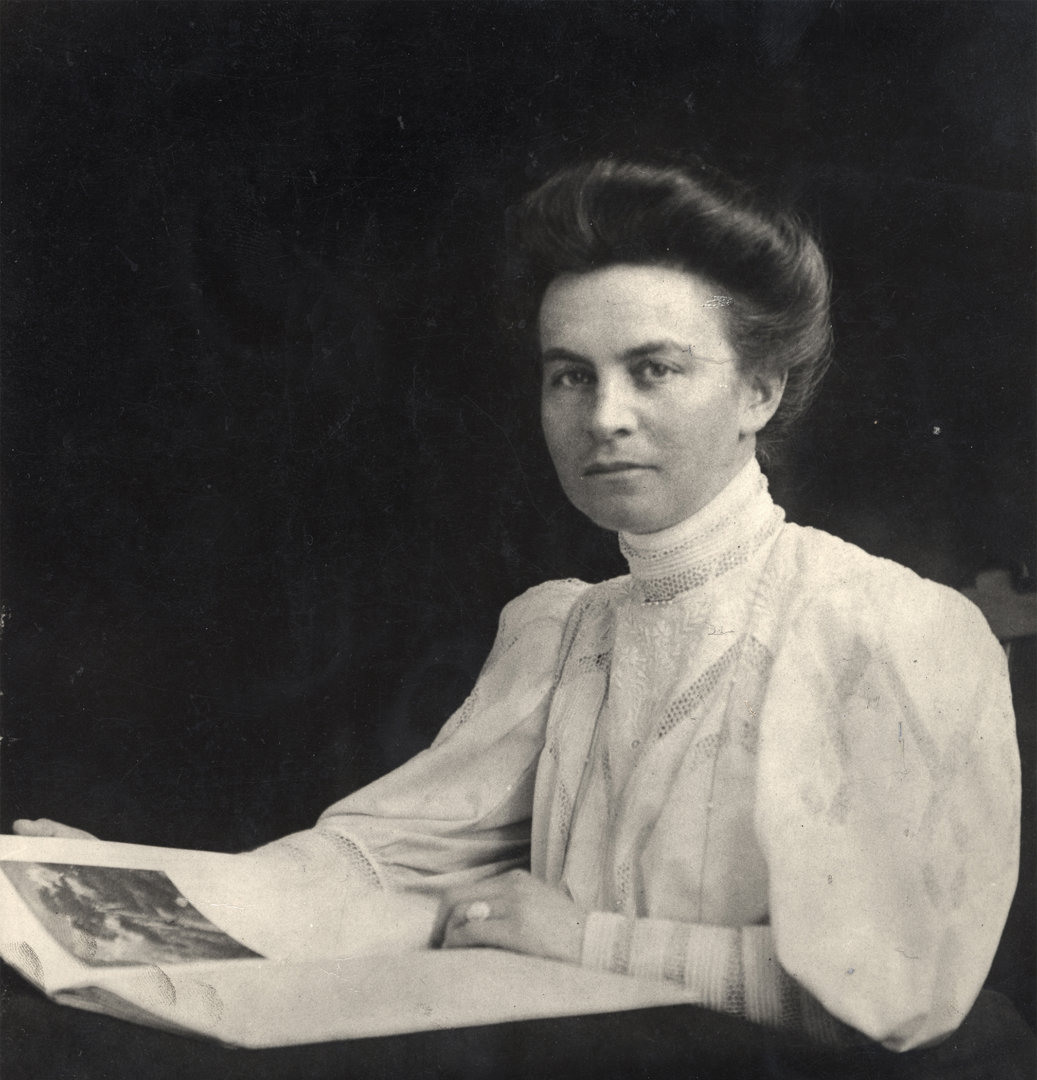National Gallery London
13 September 2025 ‒ 8 February 2026

Georges Seurat’s painting of cancan dancers 'Le Chahut' (1889‒90) will go on display in the UK for the first time next autumn as a star loan in a major new exhibition at the National Gallery has announced - its first-ever devoted to the Neo-Impressionist art movement.
Seurat’s painting will be one of several by the artist to be included in Radical Harmony: Helene Kröller-Müller’s Neo-Impressionists (13 September 2025 ‒ 8 February 2026).
Largely drawn from the outstanding collection of the German art collector Helene Kröller-Müller (1869‒1939), at the Kröller-Müller Museum, Otterlo, in the Netherlands, the exhibition will show radical works of French, Belgian and Dutch artists, painted from 1886 to the early 20th century. These include Anna Boch (1848‒1936), Jan Toorop (1858-1928), Théo van Rysselberghe (1862‒1926), Paul Signac (1863‒1935) and Georges Seurat (1859–1891) himself.
One of the first great women art patrons of the 20th century, Kröller-Müller, assembled what is probably the world’s greatest and most comprehensive collection of Neo-Impressionist paintings just two decades after these works were painted.
As well as being one of the first European women to put together a major art collection, Kröller-Müller was a pioneer in displaying modern works of art on white walls; in a museum designed by Belgian architect Henry van de Velde, who began his career as a Neo-Impressionist painter.
Her entire collection was eventually given to the Dutch government (under the condition that a museum be built to house it), along with her and her husband, Anton Kröller's, large, forested country estate. Today it is the Kröller-Müller Museum and sculpture garden and Hoge Veluwe National Park, one of the largest national parks in the Netherlands.
As well as' Le Chahut', works by Georges Seurat coming from the Kröller-Müller Museum to the exhibition will include 'Sunday at Port-en-Bessin' (1888) and 'The Canal of Gravelines, in the Direction of the Sea' (1890) as well as two outstanding conté crayon drawings.
The exhibition will include important pictures from the same collection by other significant Neo-Impressionists such as Théo van Rysselberghe’s 'In July - before Noon' or 'The Orchard' (1890), Jan Toorop’s 'Sea' (1899), Henry van de Velde’s 'Twilight' (about 1889) and Paul Signac’s 'The Dining Room' (1886-87), which will be paired with the artist’s other interior scene, 'A Sunday' (oil on canvas, 1888-90), an exceptional loan from a private collection.
'Radical Harmony: Helene Kröller-Müller’s Neo-Impressionists' will focus on how this style that emerged from 1886 when Georges Seurat exhibited his work 'A Sunday on La Grande Jatte' at what was to prove the final Impressionist exhibition heralded the end of Impressionism and, became one of the very first pan-European art movements. So radical was the style that some critics of the time saw it as signifying the death of painting, due to the methodical nature of a painting’s production in regular pointillist dots of pure colour, removing an artist’s individuality usually expressed through their brush strokes.
The radical nature of these works will be explored both in the way that they were painted, and in political underpinnings of the Neo-Impressionist movement with artists reacting against the industrial age with a desire to reshape society by painting the struggles faced by the working class.
At the same time, they also aimed to produce pictures that sought to transcend reality, creating radically simplified compositions that captured the essence of what they aimed to depict, attaining harmony through colour and geometry.
The first exhibition to return to the temporary exhibition galleries in the National Gallery’s Sainsbury Wing, 'Radical Harmony: Helene Kröller-Müller’s Neo-Impressionists' will also feature works that Kröller-Müller did not collect herself. These will come from public and private collections worldwide including the Rijksmuseum, Amsterdam, Museum Barberini, Potsdam, and Tate, as well as pictures from the Gallery’s own Neo-Impressionist collection.
'Radical Harmony: Helene Kröller-Müller’s Neo-Impressionists' is curated by Julien Domercq, Curator, the Royal Academy of Arts, Christopher Riopelle, the Neil Westreich Curator of Post-1800 Paintings at the National Gallery, and Renske Cohen Tervaert, Curator, Kröller Müller Museum.
This exhibition is a collaboration between the National Gallery and the Kröller-Müller Museum, Otterlo.
Image: Georges Seurat 'Le Chahut', 1889‒90 © Kröller-Müller Museum

Image: Helene Kröller-Müller © Kröller-Müller Museum
Notes to editors
Publicity images can be obtained from https://press.nationalgallery.org.uk/